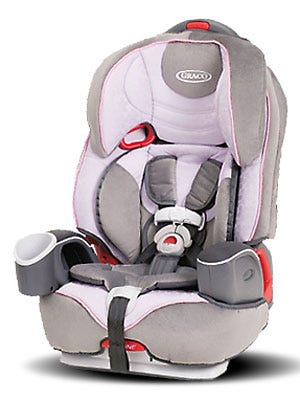Car Seat for 2 Year Old 30 Lbs

Amazon.com
Buying a child's car seat can be a confusing experience. With so many choices, brands, sizes and colors, how's a parent or grandparent to decide? We're here to help. Use the following tips to help narrow down your choices and take some of the stress out of decision-making.
1. How old is your child?
Age is one of the biggest deciding factors in choosing a seat for your child. Infants and children under one year old need to be in a rear-facing seat. Toddlers and smaller children can use a forward-facing seat, but should still be in a 5-point harness (up to the recommended weight for the seat). From about ages 4 - 8, kids should have a booster seat.
2. How much does your child weigh?
In addition to age, you need to consider your child's weight. If your child under the age of one is over (approximately) 20 pounds, then an infant seat won't work. You'll need to get a seat that accommodates children under a year, but allows you to continue to keep the seat facing the rear of your vehicle. Our son was over 20 pounds well before a year, so we got a 3-in-1 seat that allowed us to move from rear-facing to forward-facing after he turned one.
Once you convert to a forward-facing seat, your child should use the 5-point harness until they reach the upper weight or height limits for that model (usually age 4 or 40 pounds). Our son, at 2 1/2, is already almost 40 pounds. But I'm not ready to use a seat-belt positioner for him since he's so young. So we found a seat that goes up to 65 pounds for the harness. He'll stay in that until he turns four (or longer if he hasn't surpassed the weight restriction).
3. Is the seat easy to install and use?
If your seat isn't installed properly, it doesn't matter how expensive it is or how many safety features it boasts. The National Highway Traffic Safety Administration (NHTSA) rates many car seats based on their ease of use in four categories: instructions, installation features, labels and securing the child.
If you're unsure you have the seat installed correctly, check with your local police or state highway patrol. Many of them have inspection days where you can drop in and get your seat checked. And during Child Passenger Safety Week (Sept. 19-25), inspections will take place all over the nation.
I'm not sure any one seat has all of my ideal features - not that I've found yet. For instance, one seat allows us to easily raise the harness when we raise the headrest. Another seat requires that you rethread the harness each time you need to move it up. And while one of them is fairly easy to unbuckle, the other one requires almost super-human strength to undo the buckle and get my child out of the car. Not something I'd find helpful during an emergency, no doubt.
4. Is it safe?
Here's the good news: all NHTSA-rated seats meet Federal Safety Standards, so as long as the seat meets standards, you're good. Be sure to check the date of manufacture on the bottom of the seat (or base for infant seats) - it should be less than ten years old, and preferably less than five. Most sources recommend that you don't buy a used seat unless you're certain it's never been in an accident. Seats are only made to withstand forces from one crash - not several.
Maybe you've had your seat for a year or two. Has it been recalled? Make sure you register your car seat so you'll get important recall notices. You can also check the NHTSA site for defects and recalls.
5. Can I clean it?
This is where it gets tricky. Some seats have detachable covers, some don't. And those that do detach can be easy to reinstall or require an engineering degree to get it back on. If you can, inspect a seat in a retail store so you can see how the cover is attached. Owners manuals usually list instructions for cleaning, but they're not always clear.
6. Is it worth the price?
This last question is entirely subjective. Are the more expensive models better than the cheaper ones? Not necessarily. It depends on your child's needs. Some seats may be more comfortable for him or her than others. For instance, our seat that converts from rear to front is now a little too narrow for our son and the straps leave marks on his neck (even with the belt pads it came with). But the other seat (we bought one for each vehicle) has a higher 5-point harness rating (for weight) and is wider. No neck scratches for him. The first seat, which was more expensive, didn't fit our needs as he got bigger. Sometimes it takes trial and error. Most kids won't stay in just one seat for 4 or 5 years anyway.
So after all that, what's the best seat? The best one is the one that works for your family. One that you can install properly, is comfortable for your child and enables you to buckle them in securely and safely. After all, isn't their safety the number one priority anyway?
Related Articles on AskPatty.com:
National Child Passenger Safety Week: Get Your Car Seat Inspected
Keep Your Kids Safe: Use Your Car Seat Safely
Booster Seat and Seat Belt Safety Reminders!
This content is created and maintained by a third party, and imported onto this page to help users provide their email addresses. You may be able to find more information about this and similar content at piano.io
Car Seat for 2 Year Old 30 Lbs
Source: https://www.womansday.com/life/a5298/choosing-the-right-childs-car-seat-112766/
0 Response to "Car Seat for 2 Year Old 30 Lbs"
Post a Comment